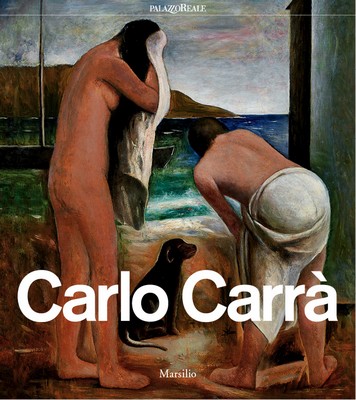Richard Pettibone: Endless Variation
The FLAG Art Foundation, New York
October 27, 2018 - January 19, 2019
“I wished I had stuck with the idea of just painting the same painting like the soup can and never painting another painting. When someone wanted one, you would just do another one. Does anyone do that now?” -Andy Warhol, 1981 [1]
The FLAG Art Foundation presents RICHARD PETTIBONE: Endless Variation, on view on its 9th floor. A prominent figure in the Pop, Post Pop, and Appropriation Art movements, Richard Pettibone creates small-scale replicas of iconic masterpieces by artists ranging from Marcel Duchamp to Roy Lichtenstein to Andy Warhol. The intimately-sized works, some as small as two by two inches, speak to themes of reproduction, originality, and authorship—ideas as relevant in today’s art world as when he began painting in the early 1960s. Richard Pettibone’s work continues a line of questioning that began with Duchamp and ran through successive generations of artists: What does it mean to appropriate an image of an image of an image?
The exhibition features work that spans 1964 to 2018, focusing on self-portraiture, seriality, and photorealism—three major themes within Richard Pettibone’s oeuvre that the artist continually, and often humorously, critiques and reinterprets. The artist’s facility with representation is particularly evident in his photorealistic paintings and “combine” works, which feature multiple canvases collaged together. Presented en masse, this rarely seen part of the artist’s practice sheds light onto Richard Pettibone’s interest in the intersection of style, pastiche, and art history. Juxtaposed with fine art reproductions of the satin ballgowns from Jean-August Dominique Ingres’s Princess de Broglie, 1853, and the rigid geometry of Frank Stella’s Union Pacific, 1950, are testosterone-fueled images of dirt bikes, race cars, and playboy center-folds.
FLAG’s south gallery is dedicated to the artist’s recurring and career-spanning recreations of Warhol’s iconic Campbell’s Soup Cans, with more than 150 canvases on view. Richard Pettibone he first encountered in the artist’s seminal 1962 Soup Cans exhibition at Ferus Gallery, Los Angeles, CA. “I remember that show so clearly,” Pettibone recounts, “The 32 cans were shown in two rooms, and when you walked into this room, all the paintings were all the same. And then you walked into the second room, and it was more of the same; it was the craziest show I’ve ever seen! But slowly I realized, ‘oh my god, they’re all different flavors.’”
Richard Pettibone’s self-portraits place the artist as subject matter, revealing more about his life and influences, all laden with humor and poetic wit. Installed chronologically, these works take shape in various forms, ranging from the artist’s own fingerprints, to paintings based on and scaled to candid polaroids, to series inspired by Duchamp’s Wanted: $2,000 Reward, 1923, posters and Coeurs Volants (Fluttering Hearts), 1936. The latter nods to Richard Pettibone’s recent heart attack, the date of which, “October 16, 2016,” is inscribed at the top of the painting. Like Marcel Duchamp, Richard Pettibone believed everything was a readymade and up for grabs, and his work is infused with a reverence for the artists that he was appropriating – often simultaneous with the artists creating their works—offering an inventive commentary on 20th-century art.
Richard Pettibone: Recent Works is concurrently on view at Castelli Gallery from September 12 - November 21, 2018.
RICHARD PETTIBONE (b. 1938, Alhambra, CA) is an artist living and working in Charlotteville, NY. A pioneer of appropriation art, Richard Pettibone has dedicated his career to creating miniature replicas of artworks by iconic contemporary artists, including Roy Lichtenstein, Frank Stella, and Andy Warhol. Initially constructed to match the size of images of the original works he found in Artforum magazine, Richard Pettibone’s small-scale facsimiles address themes of reproduction, seriality, and authorship. In 1962, Richard Pettibone received his MFA from the Otis Art Institute, CA. He has been the subject of numerous solo exhibitions, including Richard Pettibone: Recent Works, Castelli Gallery, New York, NY (2018); Richard Pettibone: 64 Paintings, 9 Works, Castelli Gallery, New York, NY, (2016); Richard Pettibone (1964-2009), Galerie Mitterrand, Paris, France (2014); Richard Pettibone-Paintings and Sculpture: 1964-2003, David Nolan Gallery, New York, NY (2013); among others. Recent group exhibitions include Miniatures by Master Artists, Joseph K. Levene Fine Art, Ltd., New York, NY (2018); Very Appropriate, Robert Berman Gallery, Santa Monica, CA (2017); Marcel Duchamp Fountain – An Homage, Francis M. Naumann Fine Art, New York, NY (2017); The Natural Order of Things, Museo Jumex, Mexico City, Mexico (2016); The Appropriationnist (Against and With), Villa du Parc, Centre d’Art Contemporain, Annemasse, France (2015); among others. Several institutions have honored him with significant retrospective exhibitions, including The Institute of Contemporary Art at the University of Pennsylvania, Philadelphia, PA, in 2005, The Frances Young Tang Teaching Museum and Art Gallery at Skidmore College, Saratoga Springs, NY, in 2005, and the Laguna Art Museum, Laguna, CA, in 2006.
[1] Shaar, Elisa. “Richard Pettibone: Painting the Same Painting Then and Now,” Richard Pettibone, September 10-October 26, 2013, published in 2013 by Castelli Gallery.
THE FLAG ART FOUNDATION
545 West 25th Street, New York, NY 10001

